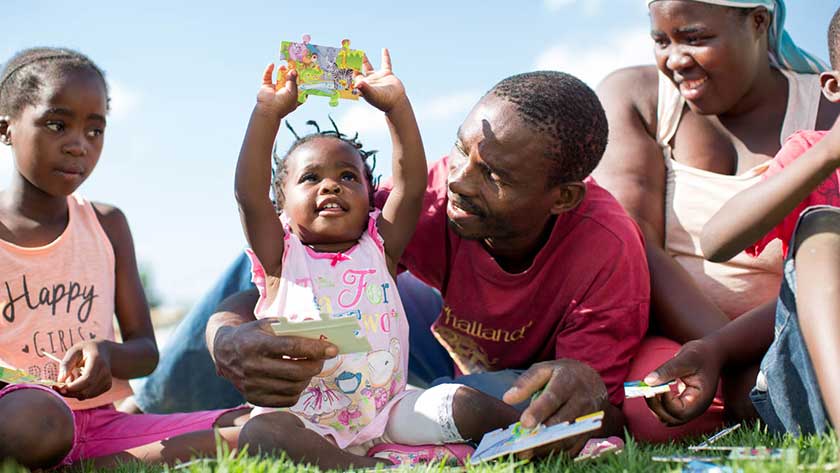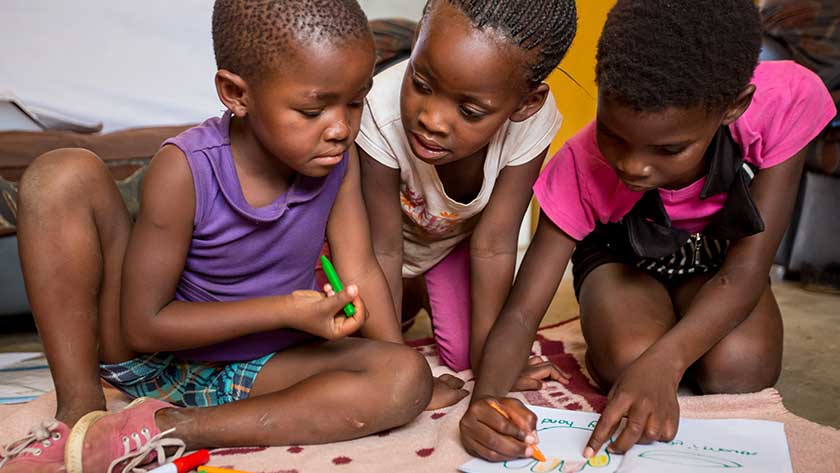Social Impact Bonds (SIBs) are an outcomes-based (pay-for-success) model where private investors contribute debt capital to fund projects with social goals. If the projects achieve their targets, the investment capital, plus an interest-based return, is repaid by an outcome funder—usually a government department or private grant provider. If the impact goals aren’t met, investors can lose their interest return or lose some or all their capital investment. Outcome funders therefore only pay for pre-determined results.
For social entrepreneurs who tend to provide on-the-ground services, and need to access funding, scale their work, and measure their impact, SIBs could be a natural funding mechanism.
SIBs have had the most uptake in the Global North, funding activities such as reducing homelessness, education, and reducing recidivism. In September 2018, a new SIB was launched in South Africa’s Western Cape Province, one of only a handful of SIBs on the African continent. Called the Impact Bond Innovation Fund (IBIF), this bond channels capital toward an Early Childhood Development (ECD) program.
SIBs require several actors—service providers, outcomes payers, and investors— as well as skilled intermediaries who monitor the outcomes. In this case, mothers2mothers and Volta Capital partnered to fulfil the Intermediary Role for IBIF, working to structure and solicit investments, and dividing the performance management and transaction governance and management roles, respectively.
While it is exciting to see IBIF implemented, funded, and monitored, the path to launch was lengthy and challenging. We present here our account of the process—the good, the bad, and the ugly. We hope that others contemplating SIBs can learn from our experiences.
The concept for IBIF was first discussed in 2014, in a wide consultative process shepherded by the Bertha Centre for Social Innovation and Entrepreneurship at the University of Cape Town (Bertha Centre). Work on the SIB began in earnest in 2015. Initially, the plan was to combine two SIBs with one set of investors, but two implementing organizations and two sets of outcome funders. One SIB was to be focused on a child’s First Thousand Days of ECD programming, and the second on ECD programming targeting children aged three-to-five.

A complex process of education, consultation, and partnership building followed, with a focus on securing soft commitments from investors and government departments. By Q3 of 2015, both the Western Cape Department of Health (DOH) and Department of Social Development (DSD) were committed to pursuing these SIBs, and the process of formally selecting intermediaries began.
mothers2mothers was selected as an intermediary alongside Volta in Q4 2015. The intermediary partnership then led 18 months of complex structuring, negotiation, and partnership building. Futuregrowth Asset Management (Futuregrowth), the only commercial investor in the transaction was approached by m2m to invest in the IBIF in March 2017, and shortly thereafter engaged in the due diligence process. By the Q2 2017 bid deadline, implementing partners were selected, investors were committed, and contracts were ready to be signed. However, a last-minute disagreement with the selected implementing partner for the First Thousand Days SIB—primarily around contract terms, the amount of outcome funding, and outcomes measurement — arose in Q3, and proved impossible to resolve. This caused significant delays as this transaction was unwound, but in Q2 of 2018, contracts for the remaining SIB were signed.
This long road culminated in IBIF’s public launch last month. Alongside m2m and Volta Capital as intermediary partners, other key players include:
So how did the transaction play out in reality? What challenged us the most?
Cost and complexity. There was almost no pre-launch funding at the outset. Pro-bono legal services were thought to be set but failed to materialize. Fortunately, investors came on board early and two contributed financially to pre-launch work. Legal costs were contributed by Innovation Edge, one of the early participants in consultations. One of the private outcome funders also advanced funds for pre-launch work. Practical challenges also arose in trying to align investment calendars.
Attempting to combine the two bonds in one transaction and one SPV made sense for cost-savings but caused considerable delays when half the transaction was unwound. The outcome funding envelopes and ECD targets were also set before the bid, and this ultimately derailed the First Thousand Days side of the transaction.
While each transaction is unique, those considering a SIB, especially in a new country or thematic area, should be prepared for long timelines and complex legal discussions.
Finding top-notch implementation partners. In general, many potential implementation partners for SIBs in the Global South have adequate subject matter expertise in their field, but most lack robust (or any) routine M&E systems, the sophisticated accounting systems that are needed to ensure the SIB project work is ring-fenced financially, and few are prepared to be performance managed on an outcome (not output) basis. Be prepared to spend lots of time hunting for and then providing significant organizational development support (ahead of launch, which also requires pre-launch funding) for your implementing partner.
Shifting from outputs to outcomes. A SIB contract must be at least partly outcome-based. Our SIB, like many others, was designed in part to allow the Government Outcome Funding partner to determine a benchmark, or minimum threshold of quality ECD services for pre-school children. It was also designed to objectively determine the fully loaded cost of delivering these services. This not only poses capacity challenges for implementing organizations but also forces government to re-assess the cost and quality of services that all its grantees provide. This can be both politically and financially challenging. This is unusual for most governments, who tend to procure goods and services on an output-basis, with tailored procurement policies and protocols. From a philosophical point of view, governments may need to completely re-assess and decide what “quality” programming means and costs. That cost may become significantly higher than that previously assessed based only on outputs.
Ensuring funder alignment. Commercial funders such as Futuregrowth often lend money to companies with the intention that these companies will make a profit. However, given that the SIB cashflow model is outcome-based, and not capital return based, it creates a realm of challenges. One of them being the transfer of risk of the “outcome” of early childhood development onto a commercial investor. Futuregrowth’s clients are pension fund investors who must earn a commercial risk-adjusted return. Additionally, as a commercial funder, Futuregrowth usually requires that equity funding be included to ensure “skin in the game” to create alignment between investors and borrowers. In this case, no provision for equity was made as the borrower is an NGO. Furthermore, this meant that investors are taking Agent risk (in this case – FCW, m2m and Volta Capital) to ensure that their intentions are pure, and that they are committed to achieving the targets set out as discussed.

Legals and complexity. As with bilateral investment deals, commercial funders require legal protections. For example, for a housing deal, commercial funders may require part of the company’s property portfolio as security. Should this company become insolvent, they are able to recover (part or all) of their investment. In this case, SIBs typically do not have the means to provide security given that its purpose is to effect social change in communities and they are typically run by NGOs. This led to additional complexity in finalizing contracts.
While the path to completion had many twists and turns, there were lots of positives. These included:
A genuine appetite for collaboration. The clear intended social benefit seemed to spark a positive reaction in everyone involved in the transaction—whether formally or not. Time and time again, we’d hear “How can we help?”. Our takeaway? With a clear vision, SIBs can attract practical and financial support—even from organizations not traditionally seen as innovative.
Willingness to innovate on contract structures by government. The need to create a wholly new contract structure was challenging but the fact that we successfully managed to navigate this obstacle should give others planning SIBs encouragement and a concrete example to share.
Strong investor appetite—from a diverse range of sectors. One of the most heartening things about IBIF is that it attracted funding from a diverse range of investors—institutional and foundations, international and domestic. While there were some wrinkles to be ironed out to align investor incentives, collaboration and innovation helped here too.
Robust due diligence was particularly important, especially since SIBs are considered high-risk investments. Futuregrowth (and other investors) had to conduct a thorough due diligence of the parties involved, the probability of achieving the pre-determined outcomes and assessment of the legal framework. This process was successful and concluded that there was a high probability of achieving the targets set. Futuregrowth also found comfort in the fact that there was alignment, that FCW and m2m have a good track record with over 30 years’ experience in the ECD field, and that other parties involved are also vastly experienced. An additional key factor is that this transaction remained true to Futuregrowth’s philosophy (shared by other investors), to develop and empower South Africa and its people by identifying investment opportunities that will not only yield suitable financial returns for their clients, but also facilitate social development.
Our message? Don’t be afraid that a SIB won’t attract investor appetite. If the vision is clear, due diligence is robust, and investor partners are prepared to be flexible (within their mandates of course!).
How Does Our Experience Fit into the Ongoing Debate on SIBs?
SIBs have been subject to a number of criticisms. A recent article in the Stanford Social Innovation Review neatly encapsulated some of these, including that SIBs are overly complex, risk commoditizing citizens, and may be stifling innovation, rather than fuelling it. Our experience on IBIF both reinforces and dispels some of these criticisms.
Complexity: This is the criticism we identify with the most. IBIF was incredibly complex, yet, we would contend it was worthwhile. The more common SIB transactions and acceptance of their underlying principles become, the more this complexity can be reduced. The community also has a role to play by openly sharing tools and experiences.
Commoditising Citizens: We also agree that SIBs can fundamentally change the nature of public service delivery. Yet, we also contend that with severely limited funding for development in the Global South, especially in areas such as Early Childhood Development, we need to use all the tools at our disposal to deliver better outcomes for citizens. If we are truly to ‘leave no one behind’ as we strive to reach the Sustainable Development Goals, SIBs could be an important element of the funding mix.
Stifling Innovation: This might be true in some countries in the Global North, but in the IBIF example, exactly the reverse was true. IBIF has driven the development of a robust M&E framework in a traditionally hard to measure arena and has also created multiple opportunities for capacity building and knowledge sharing amongst a diverse group who may never otherwise have crossed paths.
Putting together a SIB transaction will almost certainly include the good, the bad, and the ugly. But with persistence, collaboration, and a willingness to share learnings, the good can certainly prevail, and a model that provides true benefits for citizens in resource-constrained countries can gain traction.
Fiona Burtt, Senior Technical Adviser at mothers2mothers, also contributed significantly to the writing of this piece.